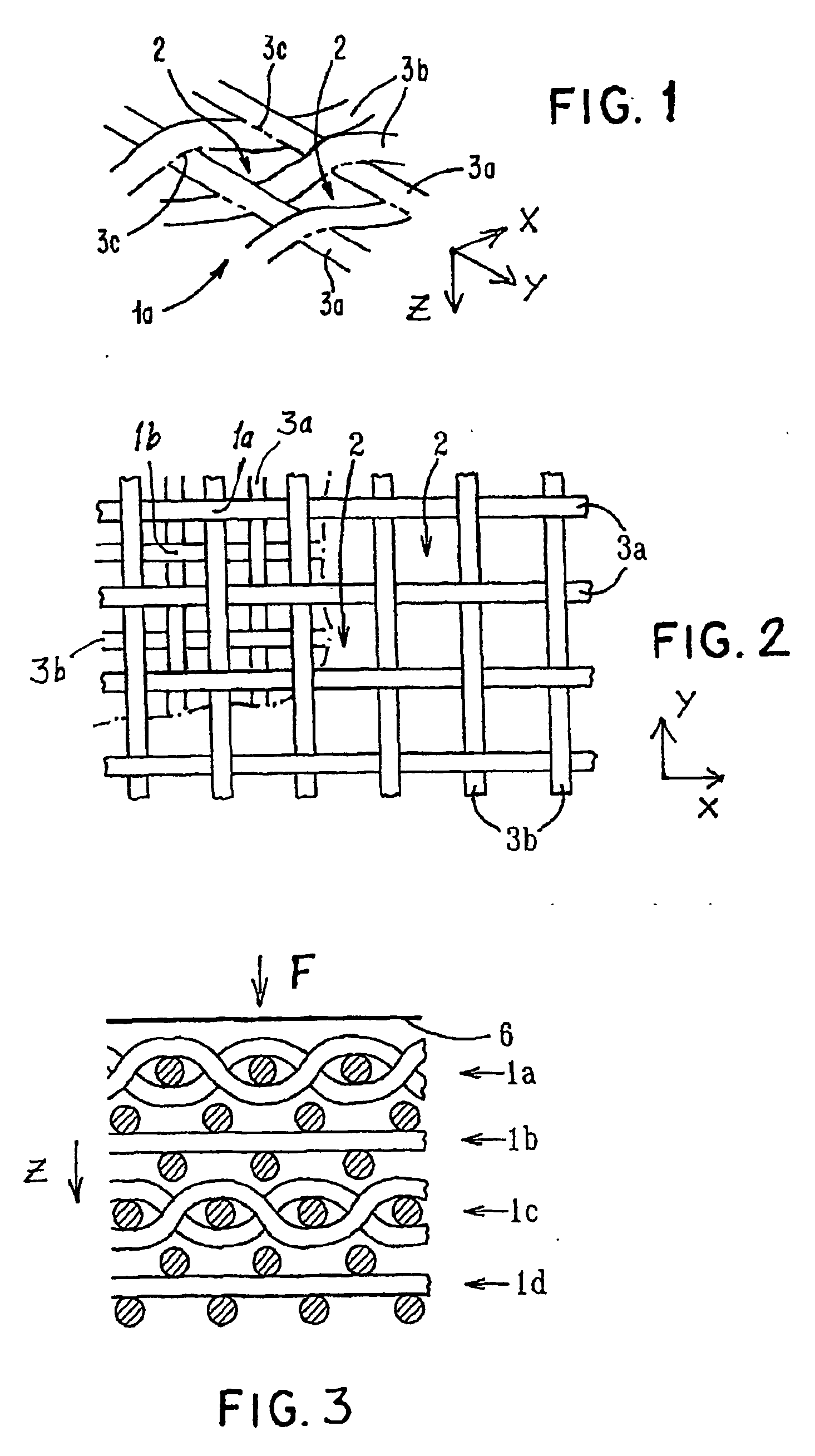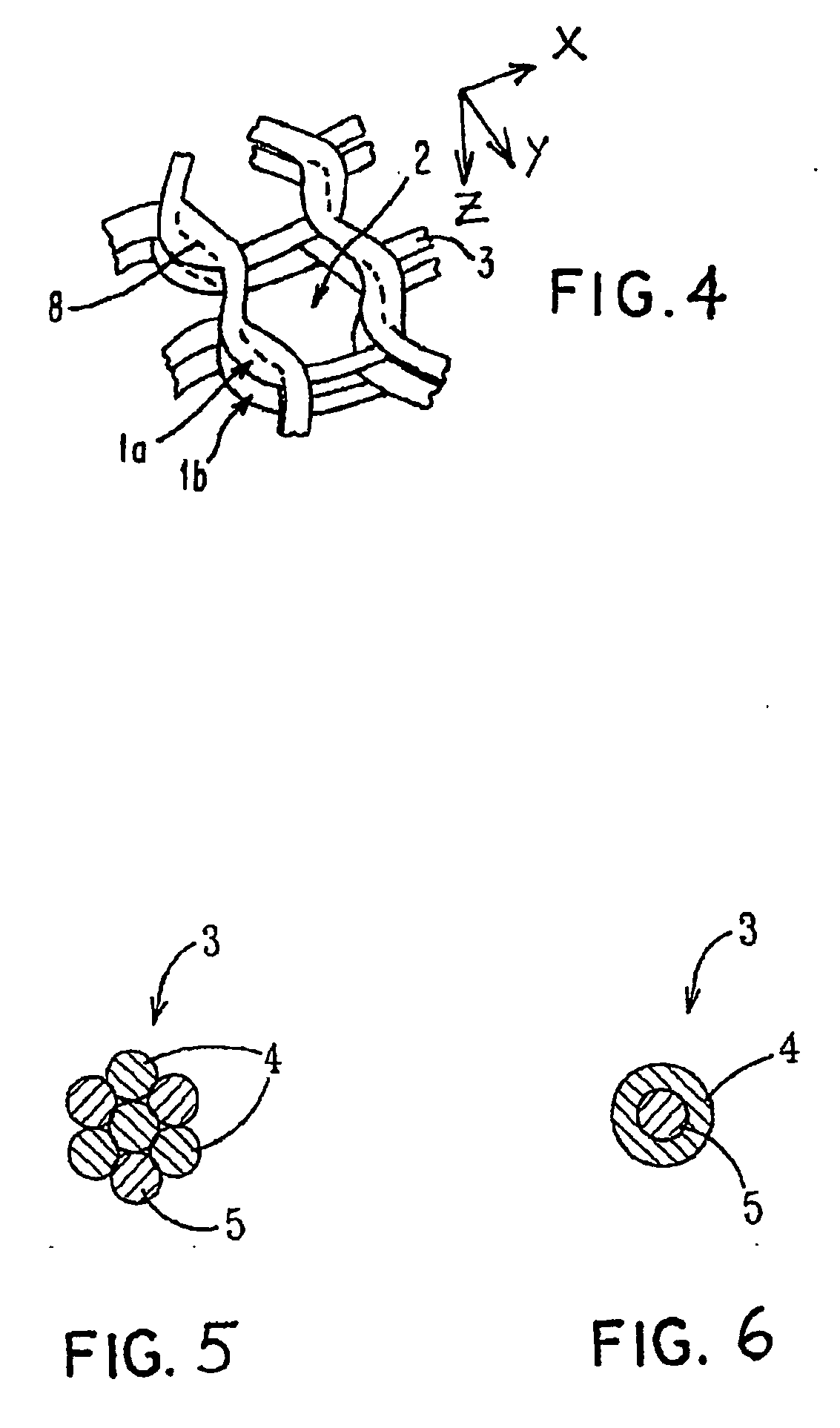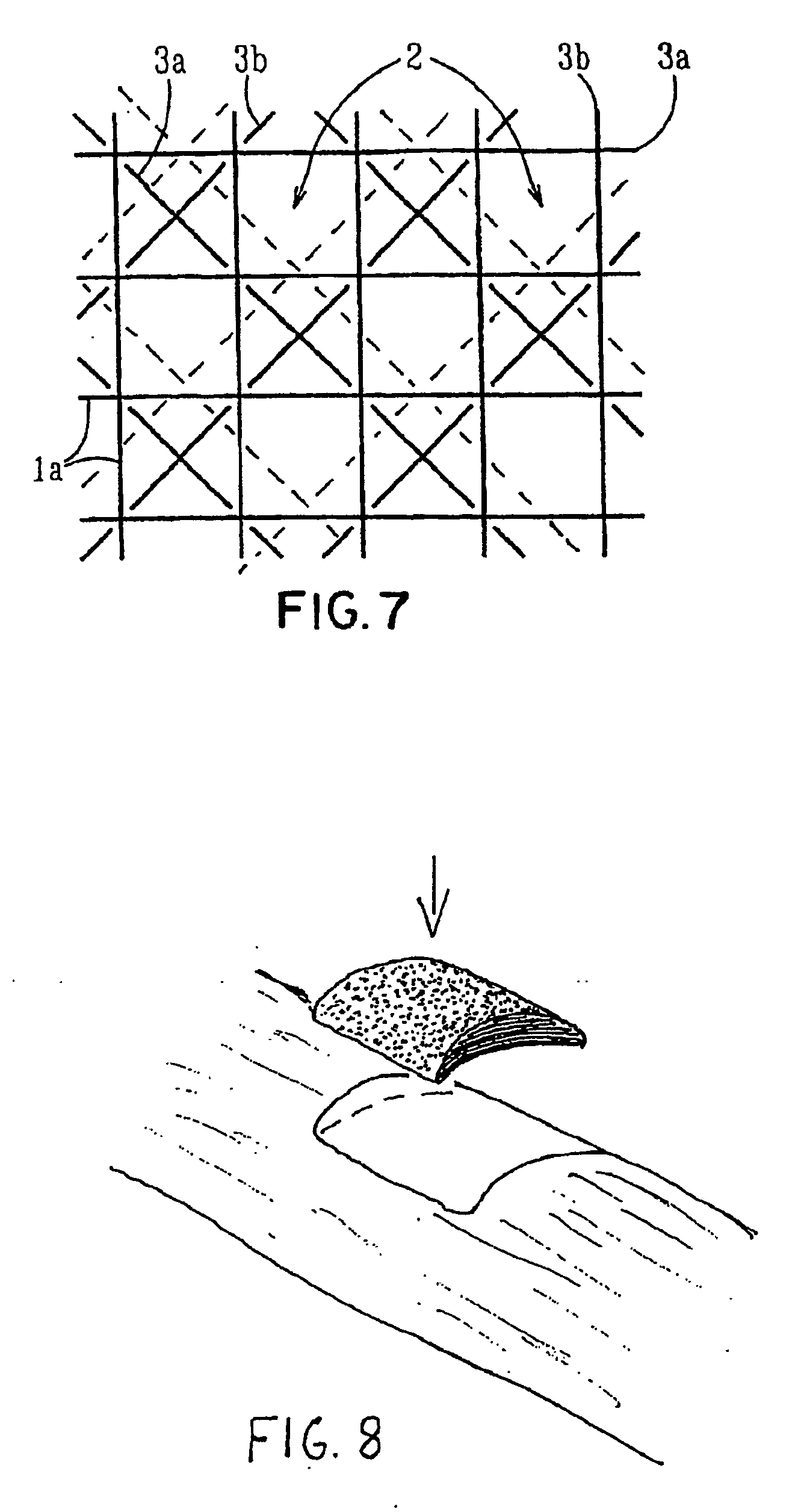Porous medical device and method for its manufacture
- Summary
- Abstract
- Description
- Claims
- Application Information
AI Technical Summary
Benefits of technology
Problems solved by technology
Method used
Image
Examples
example of an embodiment (
NON-LIMITING)
[0103] Starting materials were continuous monofilament of bioabsorbable PLLA made by fiber spinning with a diameter about 200-300 μm and bioactive glass made by spinning with a diameter 20-30 μm. These filaments were knitted together by a flat-bed knitting machine Stoll UFD with an interlock setting. Pieces of 300×300 mm were cut from the knit and four of them were piled on top of each other so that the orientations of the different layers in the machine direction coincided. The melting point of the matrix polymer used being 180° C., the laminate blank was compression moulded into a porous cellular plate at a temperature of 110-130° C., which was the range set for the machine. At the processing stage, a set of temperature and pressure (100-150 kN) profiles as a function of time was followed. Finally, the piece was air cooled under a weight of 30 kg. The thickness of the laminate was about 6 mm and the density with pores was 500 kg / m3, Samples of the cellular plate were ...
PUM
| Property | Measurement | Unit |
|---|---|---|
| Pressure | aaaaa | aaaaa |
| Structure | aaaaa | aaaaa |
| Dimension | aaaaa | aaaaa |
Abstract
Description
Claims
Application Information
 Login to View More
Login to View More - R&D
- Intellectual Property
- Life Sciences
- Materials
- Tech Scout
- Unparalleled Data Quality
- Higher Quality Content
- 60% Fewer Hallucinations
Browse by: Latest US Patents, China's latest patents, Technical Efficacy Thesaurus, Application Domain, Technology Topic, Popular Technical Reports.
© 2025 PatSnap. All rights reserved.Legal|Privacy policy|Modern Slavery Act Transparency Statement|Sitemap|About US| Contact US: help@patsnap.com



